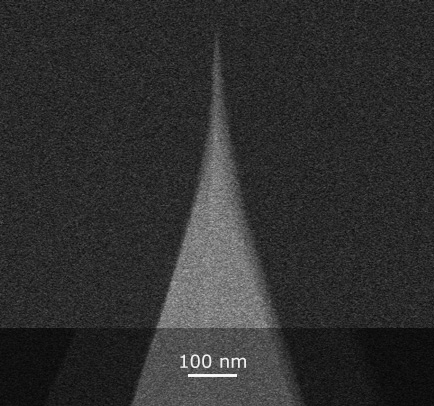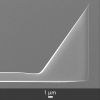
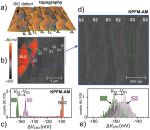
BudgetSensors® ElectriTap300-G platinum coated AFM probes used in a recentWed Apr 06 2022
Silicon carbide stacking-order-induced doping variation in epitaxial graphene is analyzed with KPFM measurements using our ElectriTap300-G platinum coated AFM probes.

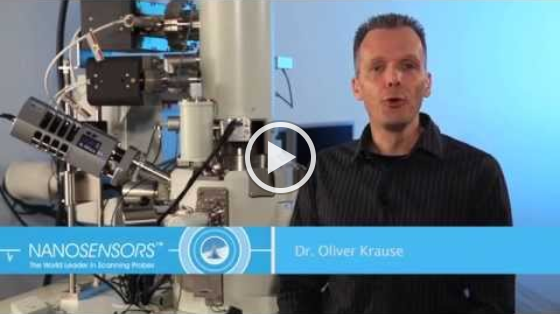
AFM probes for high resolution imaging – NANOSENSORS™ SuperSharpSilicon™ series video reaches 500 views markMon Apr 04 2022
The NANOSENSORS™ screencast on SuperSharpSilicon™ AFM probes for high resolution imaging held by Dr. Oliver Krause just passed the 500 views mark. Congratulations Oliver!
Read more...


Carbon dating in the AFM tip worldFri Apr 01 2022




MikroMasch® DLC coated AFM Probes HQ:NSC14/Hard/Al_BS AFM used in a recent studyMon Mar 21 2022

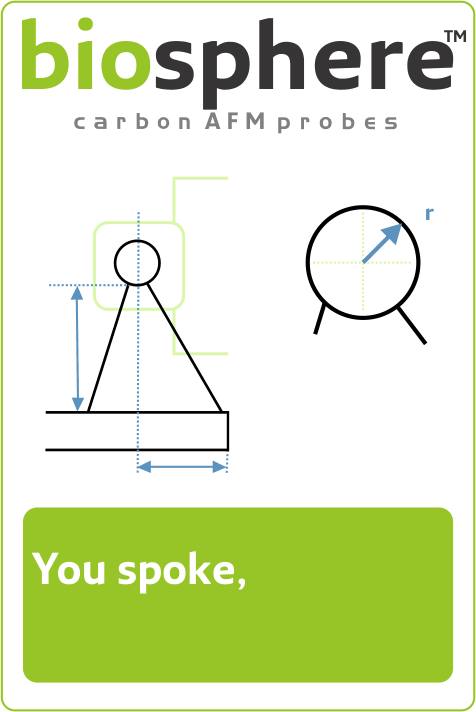
biosphere™: Now available with 5 micron radiusWed Mar 16 2022
Green Line product update:
biosphere™: new 5 µm sphere radius on your preferred cantilever upon request
- Controlled tip radius: precisely fabricated spherical tips available with 12 different radii from 20 nm - 2 µm + now also with 5 µm.
- Pre-calibrated cantilevers: individually pre-calibrated cantilever spring constant using Laser Doppler Vibrometer.
Standard with 40, 2.8, and 0.2 N/m (other k available) - Diamond-like hardness and durability: HDC/DLC sphere hardness (Young’s Modulus ≥ 800 GPa) for repeatable and long-lasting deformation measurements and nanomechanical studies.
- Chemical resistant and hydrophobic
- Au reflex coating: other coatings available.
- Provided with TrueDimensions™: 24/7 online availability of sphere radius, cantilever k and f for each individual probe.
https://www.nanotools.com/blog/biosphere-now-available-with-5-micron-radius.html


BudgetSensors® celebrates Albert Einstein's birthdayMon Mar 14 2022
"Anyone who has never made a mistake has never tried anything new." - Albert Einstein, 14 March 1879 – ∞
#AFMProbes #AtomicForceMicroscopy #HappyBirthdayEinstein


Happy World Engineering Day for Sustainable Development!Fri Mar 04 2022


Visualizing intracellular nanostructures of living cells by nanoendoscopy-AFMWed Feb 23 2022

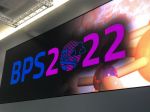
It's the last day of the exhibit at the 66th Biophysical Society Conference now happening in San Francisco!Tue Feb 22 2022


NanoAndMore USA is @BiophysicalSoc meeting this week.Mon Feb 21 2022

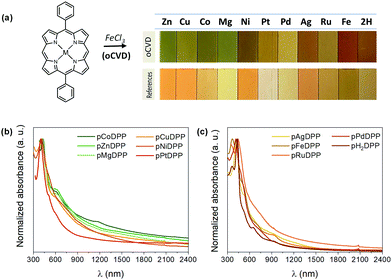
BudgetSensors® platinum coated ElectriMulti75-G AFM probes used in a recent studyThu Feb 10 2022


Studying Morphology, Actin Distribution and Stiffness Changes of Live Mature Epithelial CellsThu Feb 10 2022
- Title: Human mammary epithelial cells in a mature, stratified epithelial layer flatten and stiffen compared to single and confluent cells
DOI: 10.1016/j.bbagen.2021.129891 - Authors: Hyunsu Lee, Keith Bonin, Martin Guthold
- Publication: Biochimica et Biophysica Acta (BBA)
- Publisher: Elsevier
- Date: June 2021


Actin filaments on Mica with APTESTue Feb 08 2022

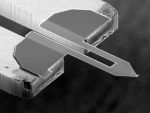
Akiyama-Probe (A-Probe) Motion VideoMon Feb 07 2022
Do you want to find out how the NANOSENSORS™ self-sensing and self-actuating Akiyama Probe (A-Probe) works? Then have a look at this video with its stroboscopic motion views that demonstrate how the tuning fork prongs and the AFM cantilever are really vibrating. More than 500 people have already watched it.


Happy New Lunar YearTue Feb 01 2022
We wish everyone a good start into the new lunar year of the tiger!


Happy New Lunar Year from NANOSENSORS™Mon Jan 31 2022

The NANOSENSORS screencast on the calibration service for AFM cantilevers has just reached the 1500 views mark.Sat Jan 22 2022
Accurately determined AFM cantilever properties are very important for quantitative force measurements. Force constant and resonance frequency are determined either by thermal tune, the Sader- or the dimensional method, respectively. Usually, the thermal tune method delivers the most precise values, but suffers from the fact that the AFM tip has to get in contact with the surface to calibrate the photo-detector sensitivity. This procedure may damage or break the AFM tip
Read more...


MikroMasch® AFM Probes used in a recent studyFri Jan 21 2022



